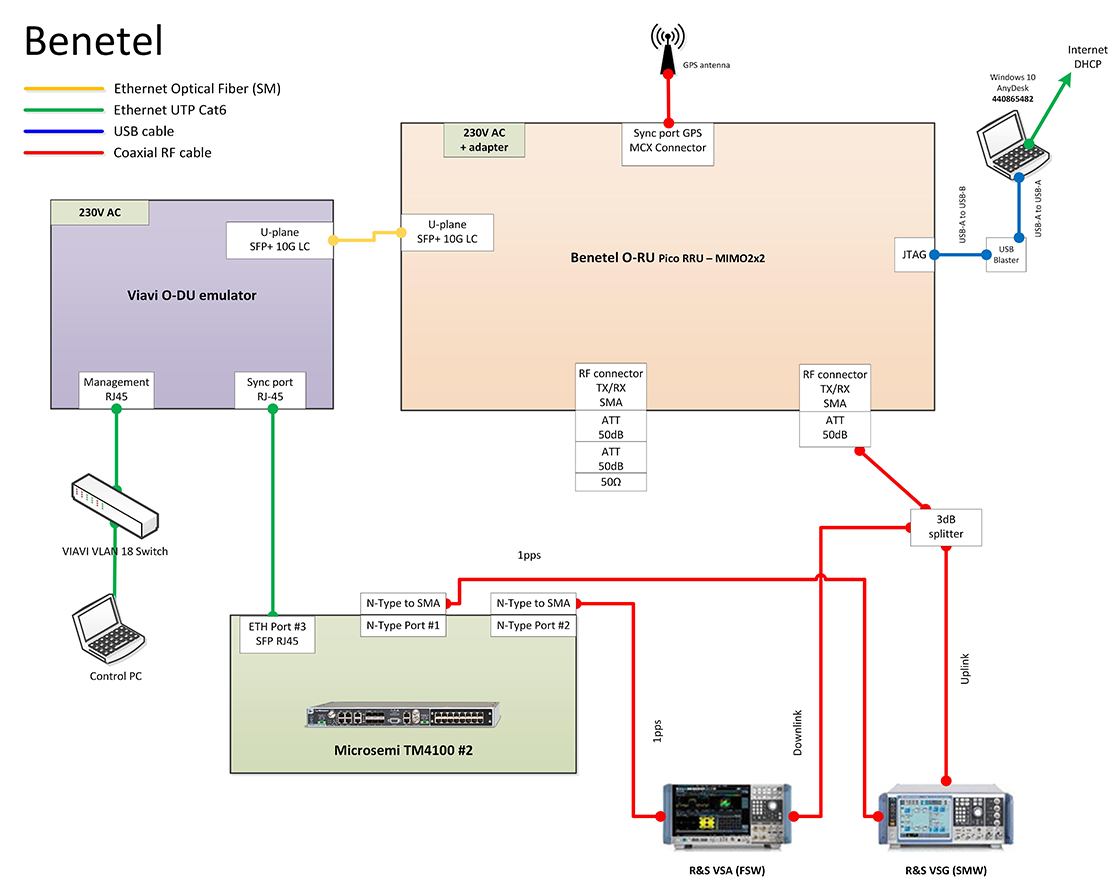Benetel provided 5G NR pico
VIAVI
Solutions provided the 5G NR
Rohde &
Schwarz provided Vector Signal Generator and Vector Signal Analyser.



The connection details of the hardware in the lab are in the network topology diagram below.


The purpose of this test is to validate that Benetel
synchronization topology.
The purpose of this test is to validate the correct
encoding of IQ data under the following conditions.
• RU Static compression configurations
• Fixed point IQ data format 14bit
• Uplink/downlink
This test case validates that the timing on the air
interface is according to requirements specified in the CUS
Specification when
the Control-Plane and the User-Plane messages are received within the
windows.
This test case validates that the transmission of the
U-Plane data in uplink direction is
transmitted correctly by the
The purpose of this test is to ensure the radio can
transmit
a basic 3GPP test frame using the default parameters.
The purpose of this test is to ensure the radio can
accurately transfer U-Plane data into the
correct resource blocks and transmit this data accurately
in the downlink.
The test validates that correct uplink operation of the
The test validates Benetel
to the
(beamId=0x000) and with one spatial stream
(single eAxC).
The test validates that the emission at the antenna connector does not occupy an excessive bandwidth and the measurement of the bandwidth for the SCS specified and the number of RBs being transmitted in IQ data utilizing the Open FH interface.
IIn this test, Benetel
Benetel test cases mainly
do U/S Plane conformance tests with fixed 16 bit no beamforming configuration. Based on the logs from
Benetel
We
validate Open FH performance, quantified by analysis of the IQ data in the U-plane payload, using
similar metrics as for 5G NR radio performance as outlined in 3GPP TS 38.141-1. EVM has been measured
for the multiple modulations (QPSK, 16QAM, 64QAM, 256QAM) and occupied bandwidth. Validated the 5G NR
Radio Performance for DL and UL tests as outlined in TS 38.141-2.